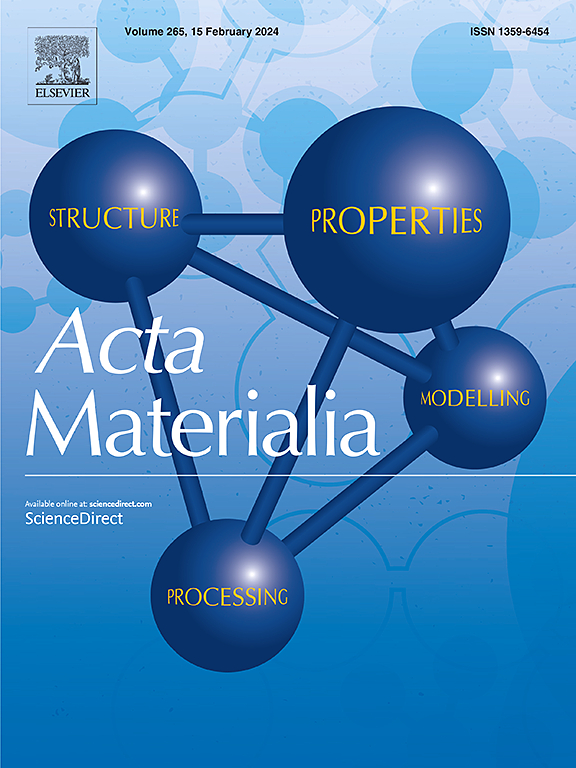低活化铁素体马氏体钢中的氘捕获机制及其与机械强化的关系
IF 8.3
1区 材料科学
Q1 MATERIALS SCIENCE, MULTIDISCIPLINARY
引用次数: 0
摘要
高强度材料的开发通常涉及引入额外的强化微结构,这些微结构也可作为氚捕获点。在核聚变材料的开发过程中,这种添加物可能会降低核聚变反应堆的燃料效率,并引发辐射问题。为了确保燃料效率和放射性安全,必须评估各个微观结构特征对氢捕获的贡献。本研究探讨了低活化铁素体-马氏体钢中氘捕获的机理及其与机械强化的关系。制作了一系列模型合金和工程钢,并对其进行了不同的热处理,以控制氘俘获点密度。利用D2气体充注和热解吸光谱评估了氘的保留,重点研究了晶界、位错、M23C6析出物和TiC析出物的作用。采用多尺度显微结构表征和同步加速器x射线衍射对其微观结构进行了表征。结果表明:TiC相的氘捕获能力最强,其次是M23C6相;位错和晶界的效率最低,但相似。定量分析了这些微观结构特征的捕获量与机械强化之间的关系,表明TiC析出物每单位机械强化捕获的氘量最高。本文章由计算机程序翻译,如有差异,请以英文原文为准。

Deuterium Trapping Mechanisms in Reduced Activation Ferritic Martensitic Steels and Their Correlation with Mechanical Strengthening
Development of high-strength materials often involves introduction of additional strengthening microstructures that also serve as tritium trapping sites. Such additions in fusion material development could degrade the fuel efficiency in fusion reactors and raise radiological concerns. The contribution of individual microstructure features in hydrogen trapping must be evaluated to ensure fuel efficiency and radiological safety. This study explores the mechanistic origins of deuterium trapping in reduced-activation ferritic–martensitic steels and its correlation to mechanical strengthening. A series of model alloys and engineering steels were fabricated and subjected to different heat treatments to control deuterium trapping site density. Deuterium retention was evaluated using D2 gas charging and thermal desorption spectroscopy, focusing on the role of grain boundary, dislocation, M23C6 precipitates, and TiC precipitates. Multiscale microstructure characterization and synchrotron X-ray diffraction were performed to characterize microstructure, which was correlated to the deuterium retention property. Results show that TiC precipitates exhibit the highest deuterium trapping capacity, followed by M23C6 precipitates. Dislocation and grain boundary demonstrate the lowest and similar efficiencies. The relationship of trapping quantity and mechanical strengthening of these microstructure features was quantified, demonstrating that TiC precipitates offer highest deuterium trapping per unit of mechanical strengthening.
求助全文
通过发布文献求助,成功后即可免费获取论文全文。
去求助
来源期刊

Acta Materialia
工程技术-材料科学:综合
CiteScore
16.10
自引率
8.50%
发文量
801
审稿时长
53 days
期刊介绍:
Acta Materialia serves as a platform for publishing full-length, original papers and commissioned overviews that contribute to a profound understanding of the correlation between the processing, structure, and properties of inorganic materials. The journal seeks papers with high impact potential or those that significantly propel the field forward. The scope includes the atomic and molecular arrangements, chemical and electronic structures, and microstructure of materials, focusing on their mechanical or functional behavior across all length scales, including nanostructures.
 求助内容:
求助内容: 应助结果提醒方式:
应助结果提醒方式:


